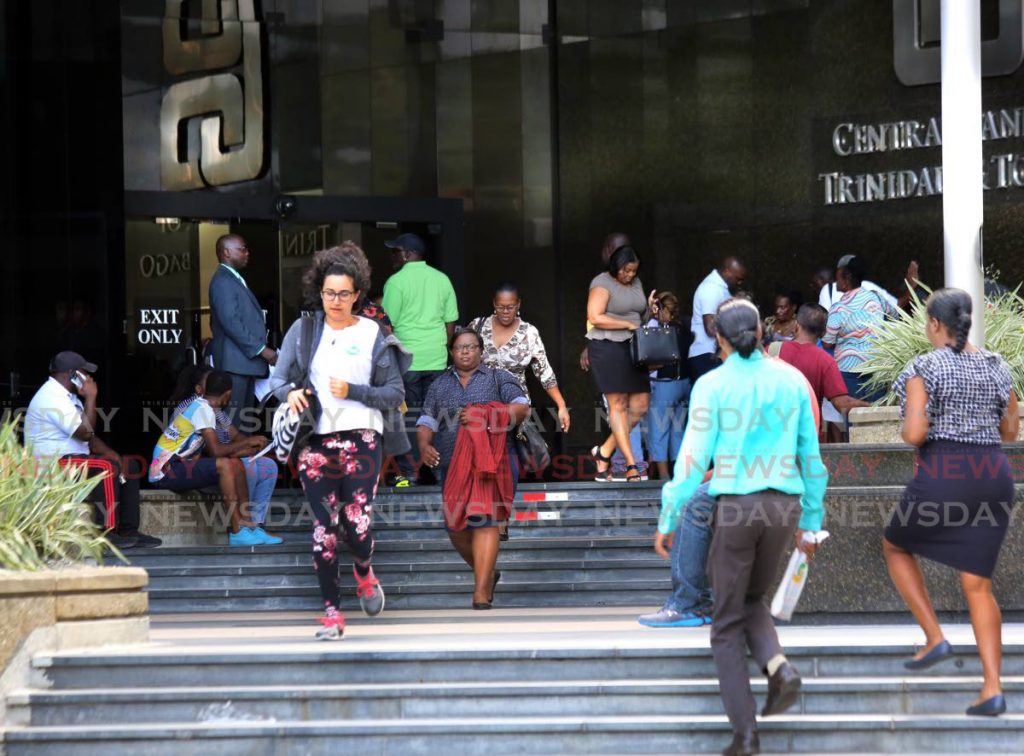Central Bank: Non-energy activity improves, labour market, forex still bleak

INCREASED non-energy activity in the latter part of the 2019 helped perk up the local economy, the Central Bank noted Friday in its latest economic bulletin.
The growth in the non-energy economy was driven by the wholesale and retail trade, financial and insurance activities, and construction sub-sectors, while weaker crude oil production continued to weigh on energy sector activity.
"During the third quarter of 2019, crude oil output maintained its downward trajectory, while natural gas production increased, generating an overall decline (year-on-year) in the mining and quarrying sub-sector.
Meanwhile, the improved availability of natural gas spurred activity in both the midstream and downstream industries," the bank said.
Data for the fourth quarter pointed to increased production of several commodities year-on-year. The labour market, however, remained bleak, even as the bank noted the lack of up-to-date labour market data.
Supplemental data suggest that labour market conditions remained weak in 2019. Retrenchment notices filed with the Ministry of Labour in 2019 were fewer than the year before, highlighted that 1,397 people were retrenched, compared to 1,681 people in 2018.
Meanwhile, job advertisements in the print media declined by 10.3 per cent (year-on-year). Most of retrenchments occurred in the manufacturing (276 people), construction (262 people), energy (227 people), and community, social and personal services (214 people) sectors.
Further, total man hours worked declined by 25.7 per cent (year-on-year) during the third quarter of 2019, reflecting, in large part, the closure of the Petrotrin oil refinery in November 2018.
The Central Bank kept its primary policy rate, the repo rate, constant at five per cent throughout 2019, where it had been since June 2018, in an effort to offset the negative differentials between yields on US and TT short-term treasury bonds and the possible negative effects on an already strained domestic foreign exchange market weighed against against a low inflationary environment and sluggish domestic economic growth.
According to the latest available estimates, the balance of payments registered a deficit of US$94.6 million in the third quarter of 2019, compared to a deficit of US$351 million in the similar period of 2018, attributed to improvements in the current account.
Merchandise exports fell by 20 per cent. The current account recorded an estimated US$184.9 million surplus in the third quarter of 2019 due in large part to reduced merchandise imports (10.4 per cent) and lower deficits on the services and primary income accounts.
The country’s gross official foreign reserves totalled US$6.9 billion (equivalent to 7.7 months of prospective imports) at the end of 2019, which was US$646.1 million lower than at the end of 2018.
"Although gross official reserves remain adequate according to traditional adequacy measures, the level steadily decreased over the year as foreign exchange outflows (for example, Central Bank net sales of foreign exchange to authorised dealers, debt servicing of external loans, et cetera.) outstripped inflows (for example, oil and gas receipts, external loan disbursements, et cetera)," the bank said.


Comments
"Central Bank: Non-energy activity improves, labour market, forex still bleak"